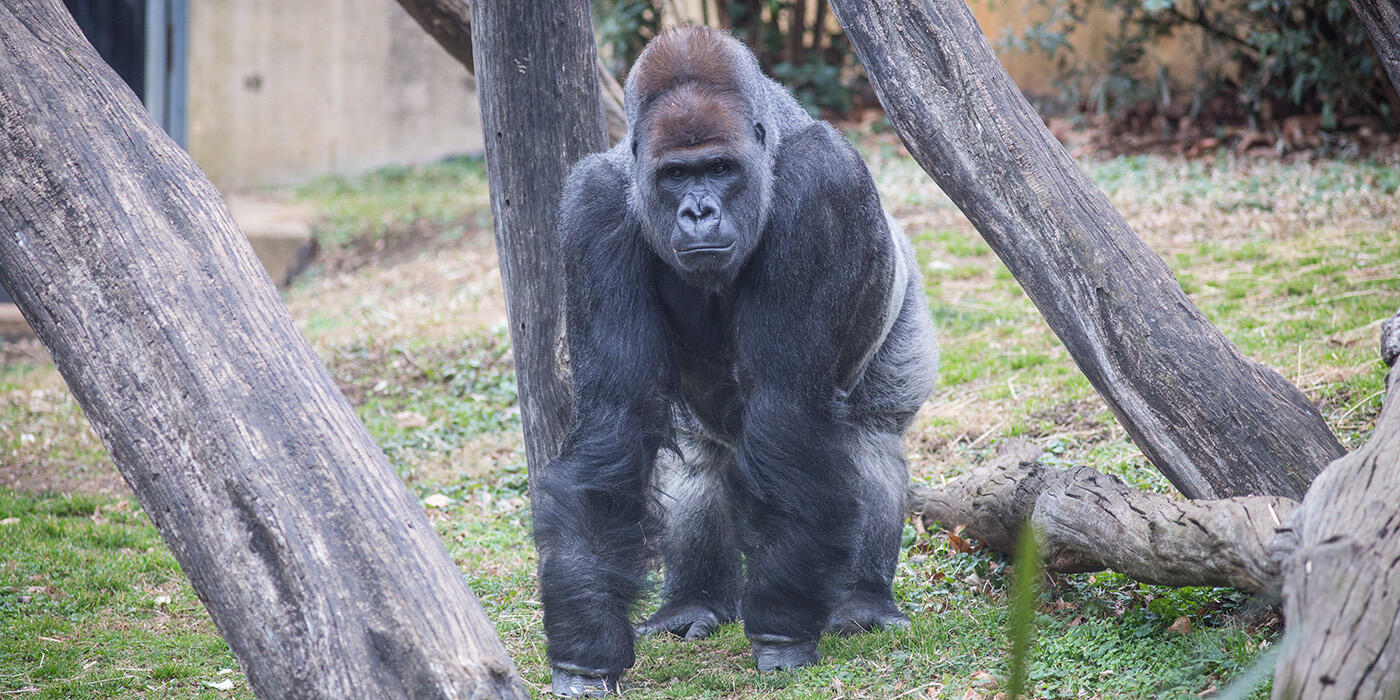#GorillaStory: Getting to Know Moke
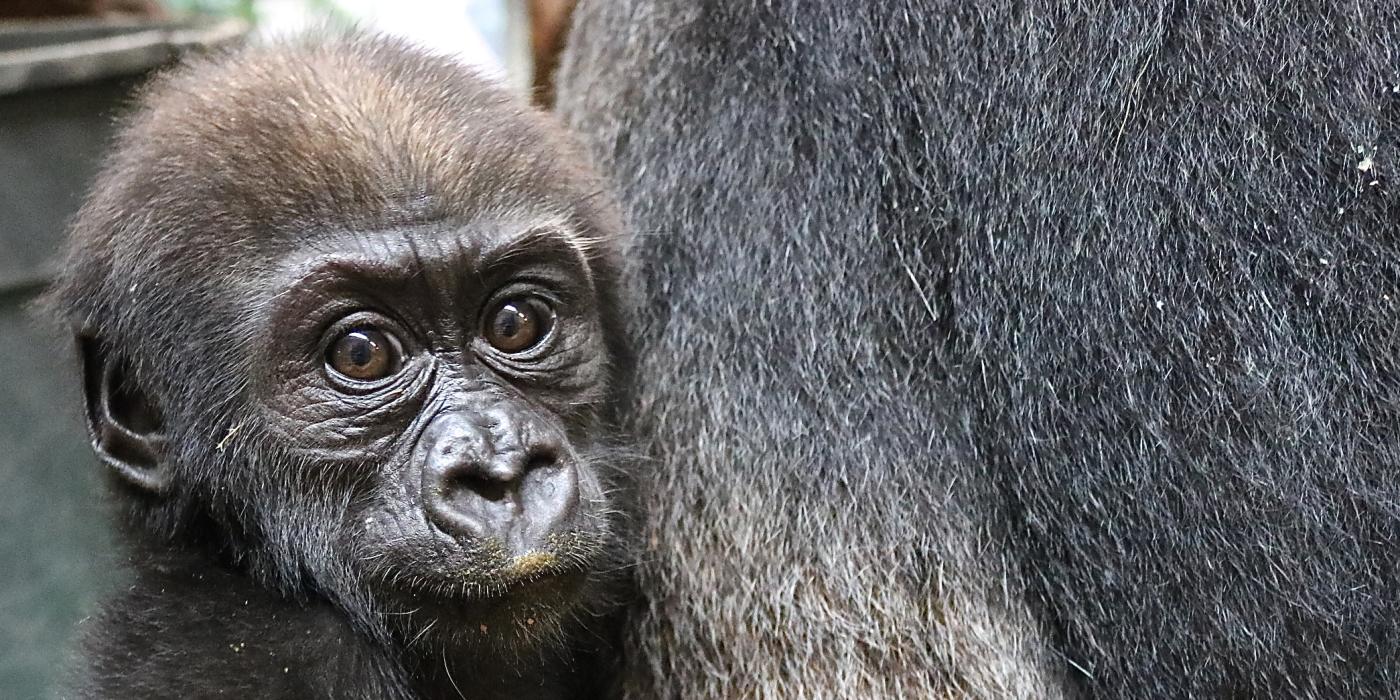
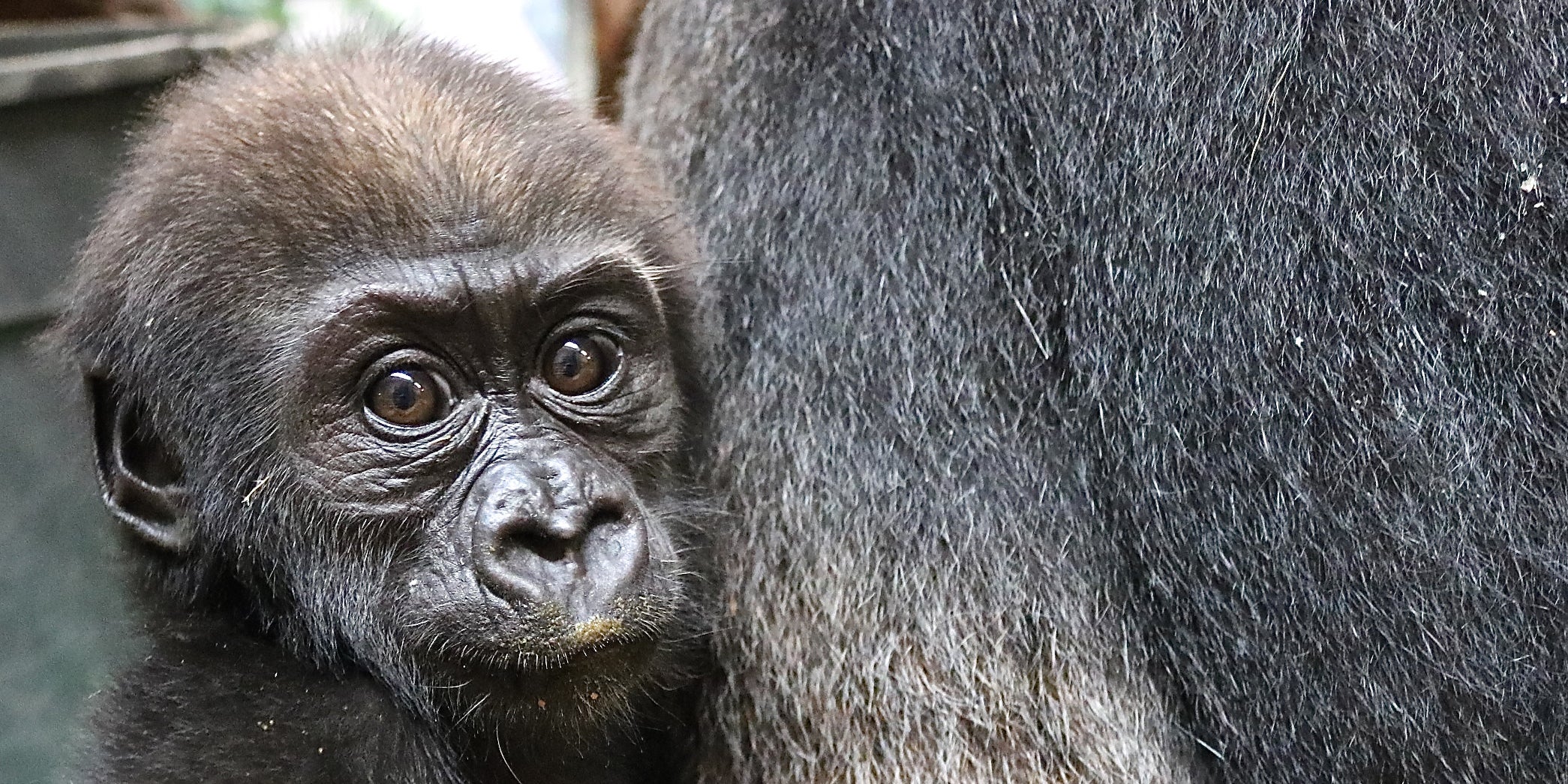
This update was written by primate keeper Melba Brown.
Last week, I noted that our western lowland gorilla infant, Moke, turned five months old. It is quite remarkable how much his appearance has changed since he was born—his hair is longer, the white patch on his rump is much more noticeable now, and the pink coloration on his palms and feet have mostly turned to black. Just a small sliver of pink remains.
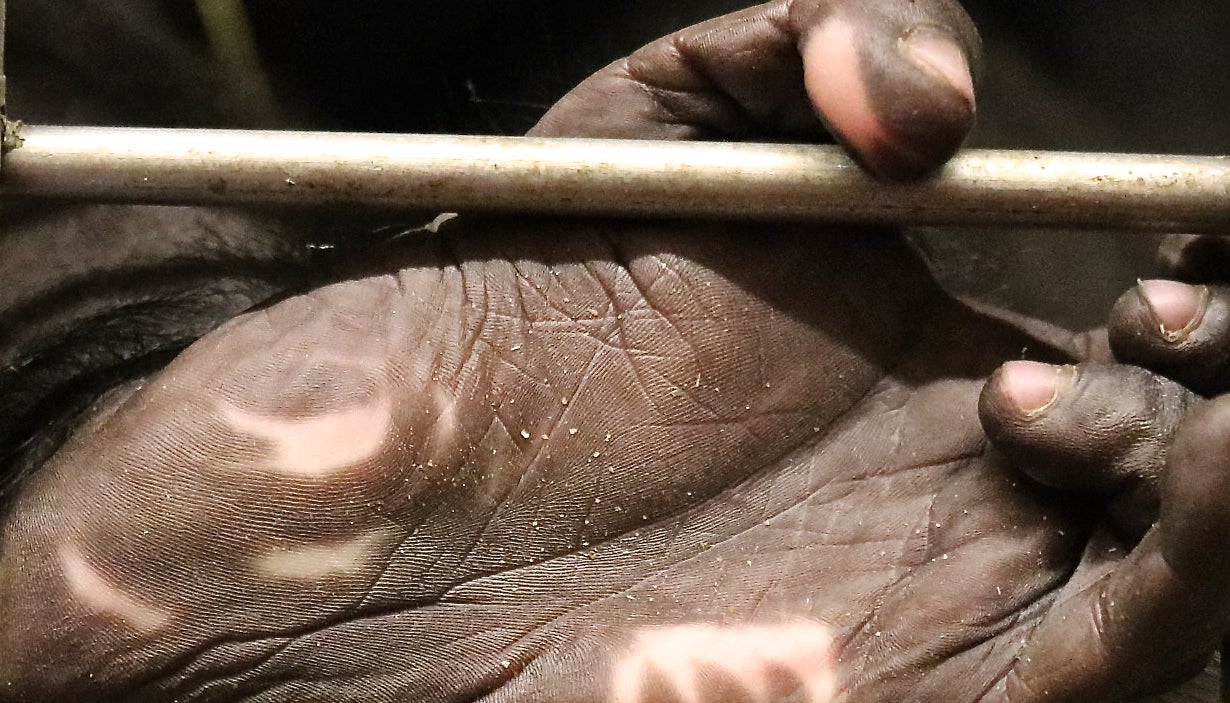
His teeth have been growing in nicely, and this week I observed molars erupting. He puts them to use often by sampling mom Calaya’s diet and during play sessions the other gorillas. Keepers have observed Moke play-bite Kibibi a few times during their bouts, exploring how much pressure is acceptable to her and the other gorillas.
Calaya continues to hold Moke close to her when the troop is in the Great Ape House’s outdoor yard. On one occasion, Calaya placed Moke on the ground in the yard. A few moments later, he loudly voiced his displeasure, and she rushed to pick him back up. Keepers do a thorough yard check every morning to ensure the area is safe for the apes. Sometimes, this involves removing foreign objects or animal visitors—including snakes—that may end up in the enclosure.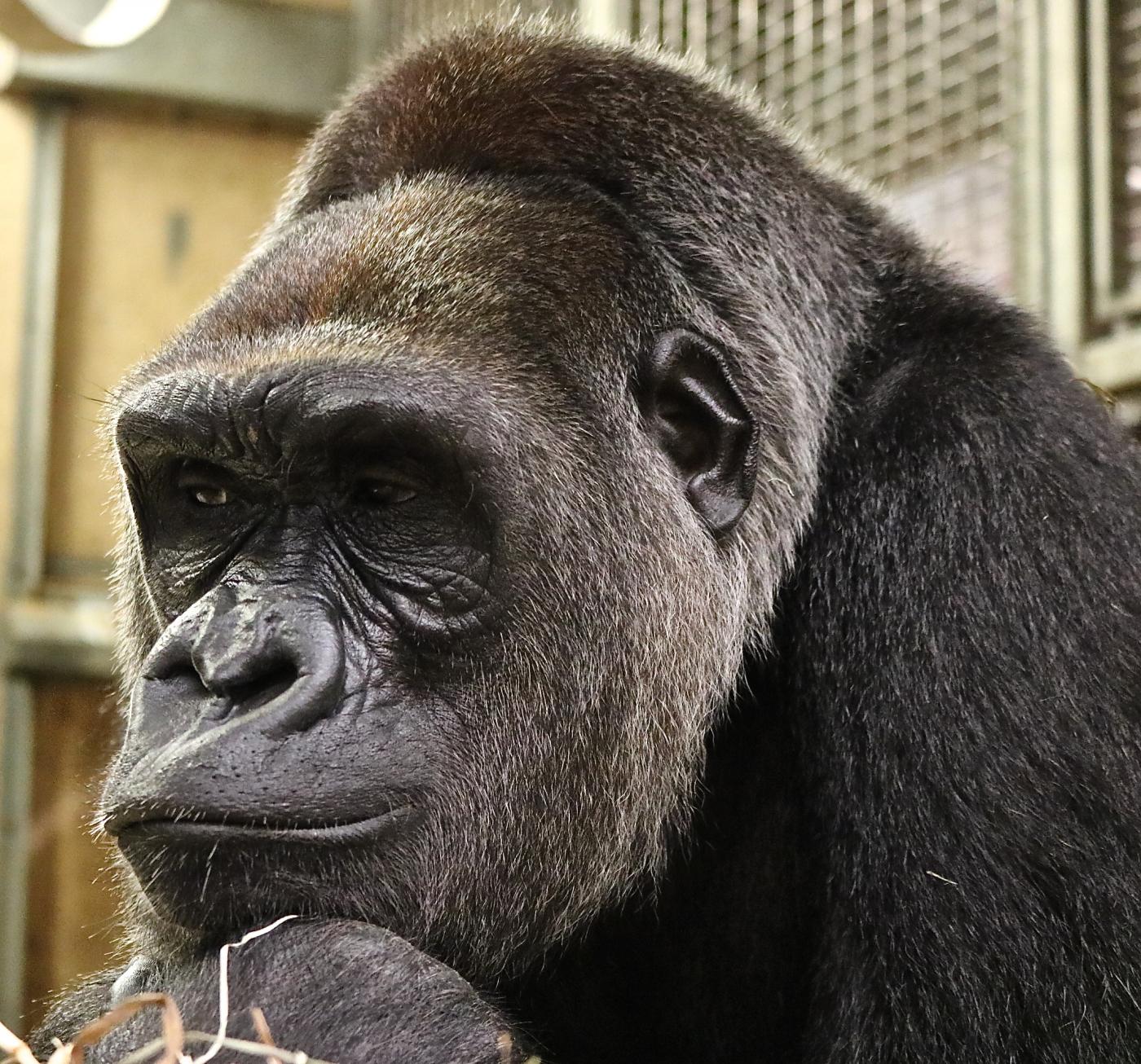
For primate keepers, there is no such thing as a “typical” day. Sometimes, we rely on our Friends of the National Zoo (FONZ) volunteers to conduct animal observations for us, when we are attending to other tasks. Every Monday morning, one of our amazing volunteers watches the family group for a three-hour period in the early morning. He collects data on the interactions between Moke and the members of his troop. The information gleaned from their interactions gives us important insight into troop dynamics and helps us get a better understanding of their behavior.
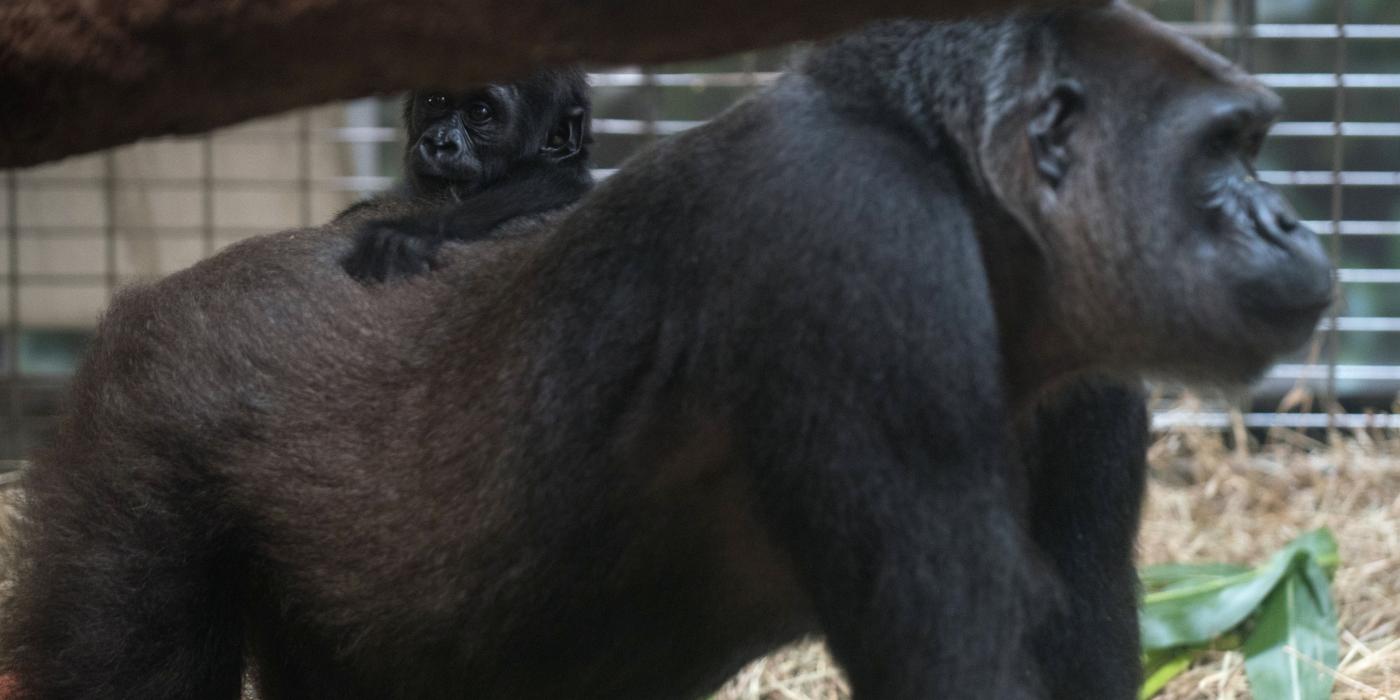
Our observations and data collection can also reveal how close associations develop between individuals. This past Monday, during this period, there were 7 interactions between Moke and Mandara; and, there were 26 interactions between Moke and Kibibi!
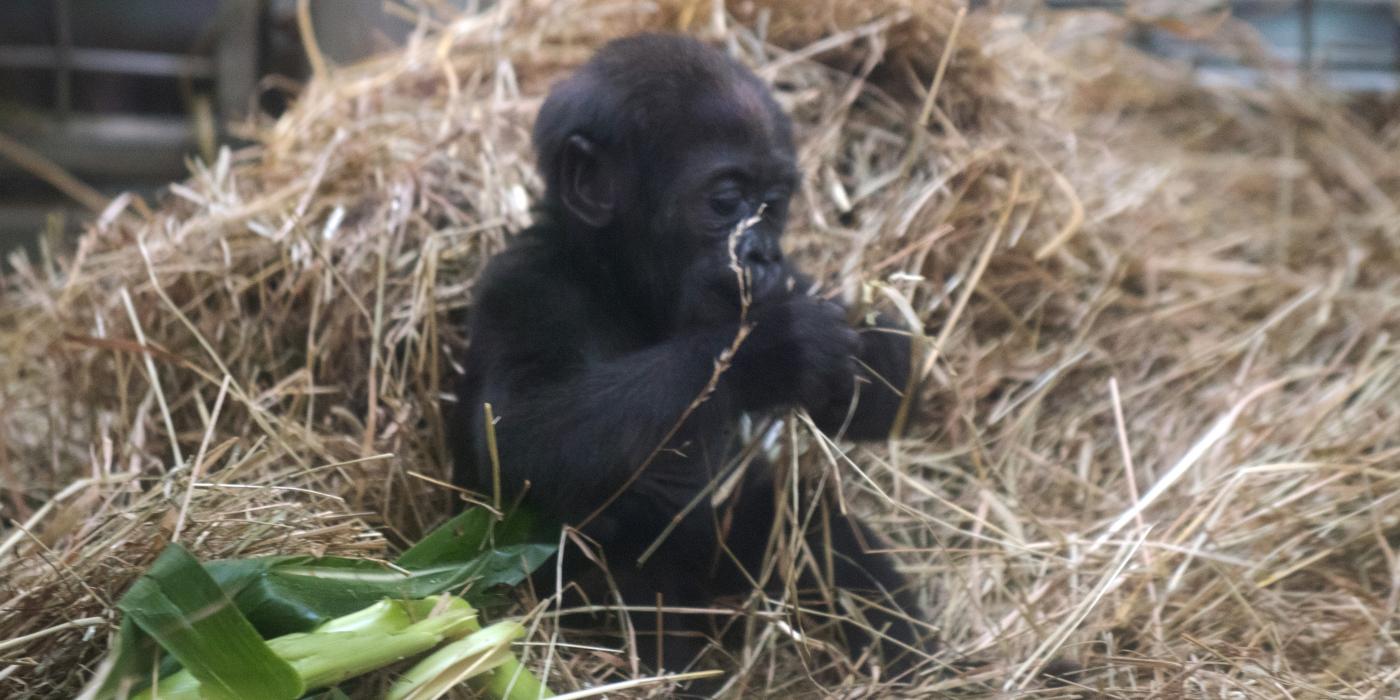
Moke did not interact with his father, Baraka, at that time. However, I have observed Moke looking at his dad with an eye of deference; it is possible he is wowed by Baraka’s massive size! As I mentioned last week, Moke weighs about 8 pounds, compared to Baraka’s 436-pound frame. It will be interesting to see how affiliations change as Moke becomes older!
Can’t get enough of Moke? Visit him at the Smithsonian’s National Zoo’s Great Ape House from 9 a.m. to 6 p.m. Please note that the gorillas have the option to rest in an off-exhibit enclosure if they choose. Don’t miss the gorilla keeper chat, which takes place at 11:30 a.m. daily, to get the latest scoop on our troop.
Related Species:

